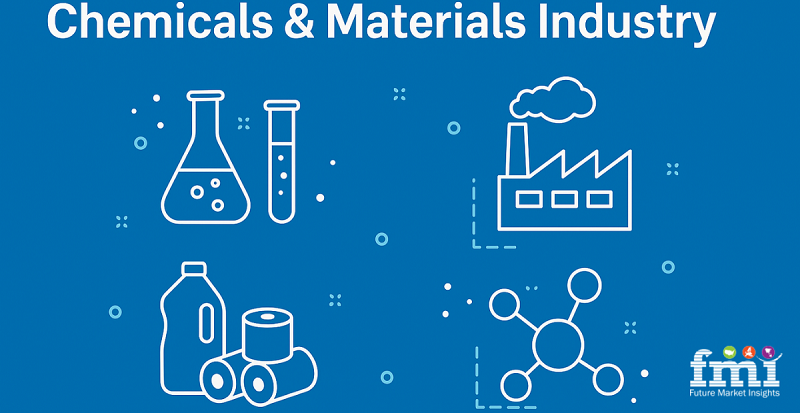Polyisocyanurate Insulation Market Current Scenario Trends, Comprehensive Analysis and Regional Forecast 2025 to 2035

The polyisocyanurate insulation market, often abbreviated as PIR insulation, has long been associated with high-performance thermal protection in roofing systems and wall assemblies. Known for its low thermal conductivity, fire resistance, and moisture resistance, PIR is widely used across residential, commercial, and industrial construction. However, a lesser-discussed but increasingly critical dimension of this market is its evolving integration into the circular economy. As building standards tighten and climate change pressures intensify, recyclable polyisocyanurate insulation is emerging as a compelling solution to bridge high performance with low environmental impact.
While discussions around the rigid foam insulation market typically revolve around R-values and fire ratings, the conversation is now expanding to include recyclability, embodied carbon, and lifecycle emissions. This shift has been driven by the growing demand for sustainable insulation materials in 2025 and beyond, with architects and developers seeking solutions that align with green certifications and net-zero targets.
Get Ahead with Our Report: Request Your Sample Now!
https://www.futuremarketinsights.com/reports/sample/rep-gb-616
Traditional PIR insulation, despite its energy efficiency benefits, has historically faced criticism for being difficult to recycle. Once installed, PIR boards often end up in landfills at the end of a building’s lifecycle, contributing to construction waste and releasing greenhouse gases over time. Moreover, earlier manufacturing processes relied heavily on blowing agents with high global warming potential (GWP), exacerbating their environmental footprint. These issues have posed significant challenges for the broader adoption of PIR in sustainable building models, especially when compared to cellulose or mineral wool, which are considered more eco-friendly in disposal.
Yet, technological advancements are beginning to shift this narrative. Recent innovations in closed-cell insulation trends have led to the development of PIR foam boards made with low-GWP blowing agents such as hydrofluoroolefins (HFOs), significantly reducing their climate impact during production. Even more notably, research initiatives across Europe and North America are experimenting with techniques to mechanically or chemically recover polyol components from PIR waste. One such example is the EU-funded REACT project, which explores dismantling composite insulation panels to enable reuse or material recovery. Although these processes are not yet commercialized at scale, they signify a crucial breakthrough in making polyiso board recycling a tangible reality.
This evolving capability for PIR recyclability aligns seamlessly with the accelerating momentum around circular construction practices. As governments and regulatory bodies tighten energy efficiency and sustainability mandates, the pressure is mounting on builders and insulation manufacturers to adopt cradle-to-cradle design principles. The European Green Deal and the revised Energy Performance of Buildings Directive (EPBD) are clear examples, mandating higher energy efficiency and resource conservation in both new builds and renovations. Similarly, in the U.S., programs like LEED v4.1 and CALGreen are encouraging the use of environmentally preferable materials, including low-emission insulation solutions.
A particularly illustrative case is the redevelopment of a commercial office complex in Rotterdam, where an innovative approach was used to reclaim and reuse PIR panels from the existing structure. Instead of demolishing and discarding the panels, contractors carefully removed and processed them for reuse in the same building, reducing both material cost and carbon impact. While still rare, such projects demonstrate that recyclable PIR can be integrated into real-world construction scenarios when supported by the right design and policy framework.
Another noteworthy development comes from a Canadian startup that has begun piloting a take-back program for PIR off-cuts and post-consumer insulation materials. These are processed in a dedicated facility to extract reusable components, creating a closed-loop supply chain for commercial roofing insulation. Though early in scale, the program has already been adopted by several large building envelope contractors in Ontario, pointing to a growing appetite for sustainable innovation within the rigid foam insulation market.
As the industry pushes further into low-carbon construction, the case for recyclable PIR becomes increasingly compelling. High-performance roofing insulation no longer needs to be a trade-off between energy efficiency and environmental responsibility. Instead, with emerging technologies and supportive policies, PIR insulation can evolve into a material that supports both immediate thermal performance and long-term ecological resilience.
Looking ahead, this evolution offers new business models for insulation manufacturers, new design considerations for architects, and new compliance pathways for builders under tightening sustainability regulations. By investing in circular economy frameworks and material recovery capabilities, the polyisocyanurate insulation market can reposition itself not just as a supplier of energy-efficient materials but as an enabler of the sustainable buildings of the future.
Polyisocyanurate Insulation Market Segmentation
By Product Type:
- Liquid
- Spray
- Rigid Foam/Board
By Application:
- Acoustic
- Thermal
- Hybrid
By End-user:
- Building & Construction
- Automotive
- Consumer Goods
- Others
By Region:
- North America
- Latin America
- Western Europe
- Eastern Europe
- Asia Pacific (APAC)
- Middle East & Africa (MEA)
- Japan
Checkout Now to Access Data Insights:
https://www.futuremarketinsights.com/checkout/6164
About Future Market Insights (FMI)
Future Market Insights, Inc. (ESOMAR certified, recipient of the Stevie Award, and a member of the Greater New York Chamber of Commerce) offers profound insights into the driving factors that are boosting demand in the market. FMI stands as the leading global provider of market intelligence, advisory services, consulting, and events for the Packaging, Food and Beverage, Consumer Technology, Healthcare, Industrial, and Chemicals markets. With a vast team of over 400 analysts worldwide, FMI provides global, regional, and local expertise on diverse domains and industry trends across more than 110 countries.
- Questions and Answers
- Opinion
- Motivational and Inspiring Story
- Technology
- Live and Let live
- Focus
- Geopolitics
- Military-Arms/Equipment
- Segurança
- Economy
- Beasts of Nations
- Machine Tools-The “Mother Industry”
- Art
- Causes
- Crafts
- Dance
- Drinks
- Film/Movie
- Fitness
- Food
- Jogos
- Gardening
- Health
- Início
- Literature
- Music
- Networking
- Outro
- Party
- Religion
- Shopping
- Sports
- Theater
- Health and Wellness
- News
- Culture

